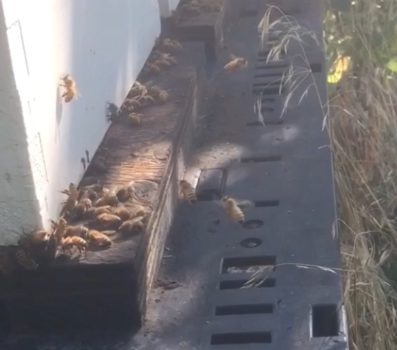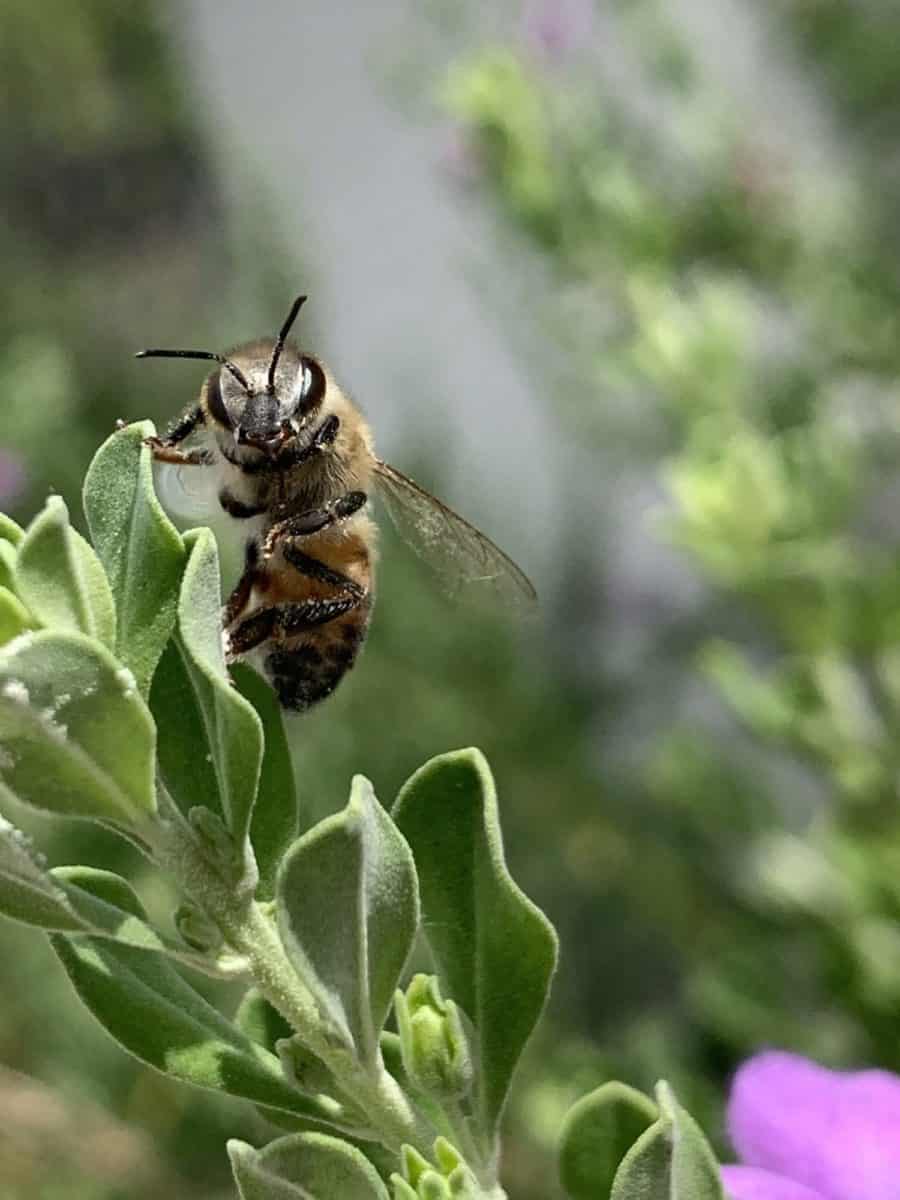I purchased some honey bees with a funny name a year ago. They were called Saskatraz honey bees. People are asking about them and what they are like. Many folks have wanted to know their temperament and specifically if they are a gentle bee to work with?
My experience with Saskatraz bees has been great. They act very similarly to Russian and Italian honey bees. They have been gentle and great to work with, not as gentle as some Carniolan bees that I have had, but gentle. This article will describe my subjective experiences and observations regarding the temperament of our Sasktraz bee hives.
What are Saskatraz bees?
Saskatraz bees have become available rather recently. They are a new variety of bee that has gone through some major breeding programs to be developed. Basically, the best attributes from selected honey bee colonies from Russia, Germany, Canada, and the United States were selectively bred into one race of honey bee. It took place in the Saskatchewan province of Canada.
The location was chosen for its ideal climate and remoteness. The place became similar to Alcatraz, the once high security prison off of the Coast of California, surrounded by fences, and kept free from contaminates, or other bee breeds. Though I have no proof the Saskatraz name derives from the famous prison facility, I’m sticking to the story, especially considering the conditions from which the Saskatraz breed came about. I wrote an earlier article about Saskatraz bees here, and have enjoyed the questions and feedback readers have given. The official Saskatraz Honey Bee project site is here. It’s pretty technical, but full of some great information.

Saskatraz honey bee characteristics
The Saskatraz honey bee was developed to have gentleness as one of its characteristics. Colonies that exhibited the specific trait of being gentle were chosen. This was a challenge. You need the honey bee to be somewhat aggressive to work to get honey and pollen as well as fend off robbers.
This is where the Africanized honey bee was headed. It was supposed to be a super aggressive honey bee that would build up honey fast and increase production and be a boon to the beekeeping industry. Well, they do work fast and hard, but they will also attack and sting in-mass. The Africanized honey bee has even killed people, including experienced beekeepers.
The Saskatraz honey bee is nothing like the Africanized bee at all. The selective breeding program has worked well. They have been able to get a gentle honey bee that works hard and produces well.
The main traits that were sought after in the Sakatraz bee project were a Honey bee that was:
- Gentle
- Good honey producer
- Good pollinator
- Hygienic
- Resistant to varroa mites
- Resistant to trachea mites
- Resistant to fungal issues such American Foul Brood
- Winter well in colder climates
To achieve getting these traits in a bee colony, beekeepers chose colonies that already exhibited one or more of these traits. These colonies as I wrote before were from premium apiaries all over the world.
By bringing these genetic qualities together the beekeepers, doctors, and biologists, were able to meticulously control the colonies queens and drones. They were able to eventually come up with the Saskatraz bee. They are proving to be a great bee to work with.
The Saskatraz bee is showing traits of being very hygienic. This is thought to be a contributor to the varroa and trachea mite resistance. The legs of the bees are longer than other bee varieties. Due to the longer legs the bees are more able to reach the mites on their bodies and get rid of them. Varroa mites and tracheal mites are thought to be linked to colony collapse disorder. The resistance to these parasites are a huge benefit to keeping bees alive and healthy.
My practical experience with Saskaraz Honey Bees
My experience with the Saskatraz bees has been very positive. I installed a package of Saskatraz bees in the spring, at the end of April. The installation was rather typical of other installations. The bees were interested in the queen and were well fed, so they showed no aggression and were very gentle.
The queen was released in a timely manner and began laying eggs quickly. The laying pattern was tight and even. The hive did normally well. I did feed them some nectar of 1-part sugar to 2-parts water with some added essential oils. We experienced a cold wet spring, so the bees spent most of the time in the hive itself.
As the summer went on my region experienced dry drought conditions. The third driest in recorded history. I was very concerned about the bees and kept a water source near the hives. There were few flowers and the alfalfa fields were stunted without many flowers showing up. Many grasses and weeds seemed to survive, just stunted a little. I believe this is where the nectar and pollen sources came from.
The bees seemed to be a little slow at starting, but by the end of June, the Sakatraz bees were doing great. When I opened the hive, they were not overly aggressive at all. I could have inspected the hives without a veil but chose not to risk it and wore my veil anyway. The bees were gentle and seemed to act similarly to the Russian bees that I have.
I generally pull honey on or around Labor Day. I was a week and half late due to the drought and heat of the long summer. I opened the hive and inspected it to see if I should take any honey at all. I have often not pulled any honey from a first-year hive. Most of the first-year resources are needed just to establish the hive. To my surprise they had filled up the 2 supers of the hive body and filled a super and a half beyond. They really produced well.
When I took the honey from the Saskatraz bees, they were not super excited about that. They didn’t swarm for attack, but they were agitated. It wasn’t anything out of the ordinary, but they were not happy with me taking their summer season’s work. Again, they acted similarly to Russian bees.
I was prepared for angry bees when I went to check on the hives again in a week after I pulled honey form them. They were back to their normal temperament. The Saskatraz bees were rather mellow and working hard to get nectar and pollen. They were fine and gentle again.
I left them with plenty of honey to winter over with. They are doing well this winter. I am looking forward to this upcoming season. My Saskatraz bees have their hives set up and I am hoping for a great harvest.
I have been warned by others who have kept Saskatraz bees that they are prone to swarming. I am going to take precautions to prevent that. I will swap the upper and lower supers of the main hive body. I may also stagger the frames like a checkerboard. That has helped in the past. I will also not let them get honey bound at all and give them plenty of room to grow and add honey and nectar.
Summary
When it comes to the temperament of the Saskatraz honey bee they are really great to work with. I have found them to be good workers and pollinators. They are gentle to work with and are similar to Russian bees in my experience. They aren’t as gentle and mellow as some Carniolan bees that I have, but they aren’t too aggressive or mean.
The Saskatraz bees also have great traits to fend off several challenges that beekeepers are finding. They are resistant to Varroa and Tracheal mites and fungal issues. They could be a good step forward in the battle with colony collapse disorder.
(Featured image credit Donna Silva)

